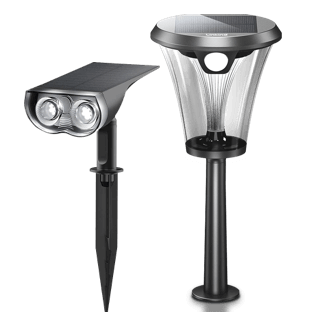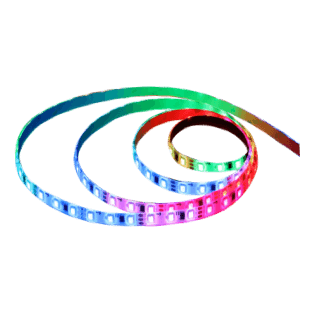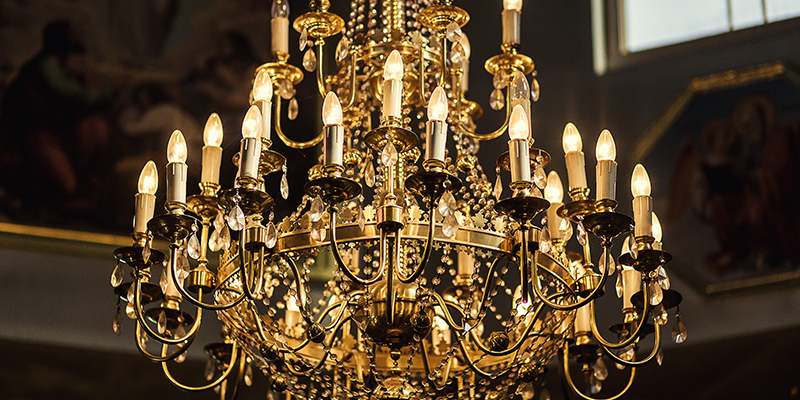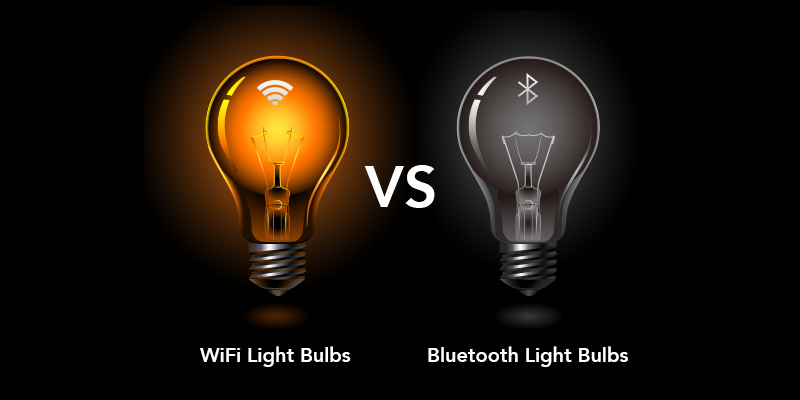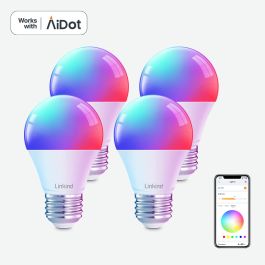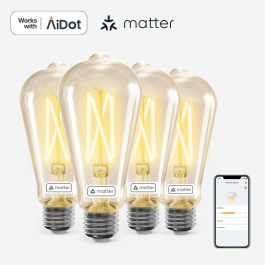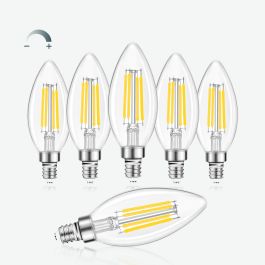Daylight vs Soft White Bulbs: How to Choose Smart Lighting for Your Home
Daylight vs Soft White Bulbs: How to Choose Smart Lighting for Your Home
Choosing the right lighting for your home goes beyond mere functionality—it sets the tone, enhances ambiance, and impacts energy efficiency. Among the plethora of options available, daylight and soft white bulbs stand out for their unique characteristics and benefits. Understanding these differences is crucial to creating a well-lit, comfortable living environment tailored to your preferences and needs.
Exploring smart lighting solutions can greatly enhance the atmosphere and convenience of your home. For insights on selecting the ideal smart light bulb, consider reading our comprehensive guide "Finding the Right Smart Light Bulb for Your Smart Home".
Understanding Light Bulb Types

What are Daylight Bulbs?
Daylight bulbs, also known as cool white or natural light bulbs, emit a bright, crisp illumination similar to natural daylight. Typically with color temperatures ranging from 5000K to 6500K, these bulbs provide a clean and refreshing ambiance. Daylight bulbs are perfect for spaces that require clarity and focus, such as kitchens, home offices, and task-oriented areas, promoting productivity and alertness.
What are Soft White Bulbs?
Soft white bulbs emit a warm and inviting light that closely resembles the traditional incandescent glow. With color temperatures typically between 2700K and 3000K, soft white bulbs create a cozy and comfortable atmosphere. They are ideal for spaces where a relaxing ambiance is desired, such as bedrooms, living rooms, and other areas where comfort and serenity are important.
Daylight vs Soft White Bulbs: Key Differences
|
Criteria |
Daylight Bulbs |
Soft White Bulbs |
|
Light Intensity |
Brighter and more intense, ideal for high visibility and focused tasks. |
Softer and less intense, suitable for creating a relaxed ambiance. |
|
Color Temperature |
5000K to 6500K, producing a cool, bluish-white light simulating natural daylight. |
2700K to 3000K, emitting a warmer, yellowish light creating a cozy atmosphere. |
|
Brightness Levels |
Higher lumens per watt, providing greater brightness per unit of energy consumed. For instance, a 4W LED bulb produces 250+ lumens, a 5W bulb emits 450+ lumens, a 10W bulb generates 800+ lumens, a 15W bulb offers 1100+ lumens, and a 20W bulb delivers 1600+ lumens. |
Lower lumens per watt, offering softer illumination per unit of energy consumed. Similar wattages for soft white bulbs will produce lower lumens. |
|
Energy Efficiency |
May consume slightly more energy due to higher brightness but still significantly more efficient than incandescent bulbs. |
Highly energy-efficient and generally consume less energy than daylight bulbs. |
|
Cost Comparison |
Higher initial cost but offset by long-term energy savings and reduced replacement frequency. |
Lower initial cost but may result in higher overall costs when considering lifespan and energy savings. |
|
Pros |
Enhances focus and productivity; ideal for task-oriented spaces. |
Creates a warm and inviting atmosphere; great for relaxation and comfort. |
|
Cons |
Higher initial cost and may consume more energy; cooler light may be less appealing for some settings. |
Lower brightness and intensity; may not be suitable for areas requiring high visibility. |
How to Choose the best Smart Light Bulbs for your home?
Choose the Right Bulb for Each Room
1. Best uses for daylight bulbs
Daylight bulbs are perfect for spaces where clarity and focus are essential. In kitchens, daylight bulbs provide bright, crisp light that enhances visibility while cooking, making meal prep safer and more efficient. Additionally, daylight bulbs are ideal for home offices as they promote concentration and productivity by simulating natural daylight, reducing eye strain during long working hours
Kitchens:Use daylight bulbs to illuminate your cooking space, providing bright and clear light that helps in meal preparation and enhances visibility.
Home Offices:Daylight bulbs in home offices can mimic natural light, boosting concentration and productivity, and reducing eye fatigue during work.
2. Best uses for soft white bulbs
Soft white bulbs are designed to create a warm and inviting atmosphere, making them the best choice for bedrooms and living rooms. In bedrooms, soft white bulbs help to foster a relaxing environment conducive to winding down and getting a good night's sleep. In living rooms, these bulbs create a cozy, welcoming ambiance perfect for unwinding with family or enjoying a peaceful evening at home.
Bedrooms:Opt for soft white bulbs to create a serene and calming atmosphere that helps in relaxation and improves sleep quality.
Living Rooms:Soft white bulbs are perfect for living rooms, offering a cozy and inviting environment ideal for family gatherings and relaxing evenings.
Tunable and Dimmable White Light: Enjoy a dimming range of 3% to 100% and easy color temperature adjustment (2700K to 6500K) from warm to cool white with our WiFi light bulbs that are not compatible with any dimmers. Multiple control methods: offers a trifecta of convenient control options - via the AiDot app, voice commands with Alexa and Google Home, or a pre-paired remote control - eliminating the need for a 2.4G WiFi connection and making your lighting experience hassle-free. No Hub Required: Enjoy the ultimate convenience with the Edison smart bulbs, allowing you to effortlessly control your lighting without a hub using either the AiDot app or the user-friendly one-button remote control, complete with a magnetic piece for easy attachment to your refrigerator. Time Schedule Function: Unlock the full potential of your Edison smart bulbs by connecting them to the AiDot app and enjoy a plethora of advanced features such as time scheduling, preset options, and group control, taking your lighting experience to the next level. Energy Efficient: Experience the perfect combination of brightness and energy-efficiency with the Edison smart E26 LED bulbs, featuring an 800lm tunable white light that's ideal for everyday use while delivering significant cost savings of over 85% on your electricity bill compared to 60W halogen bulbs.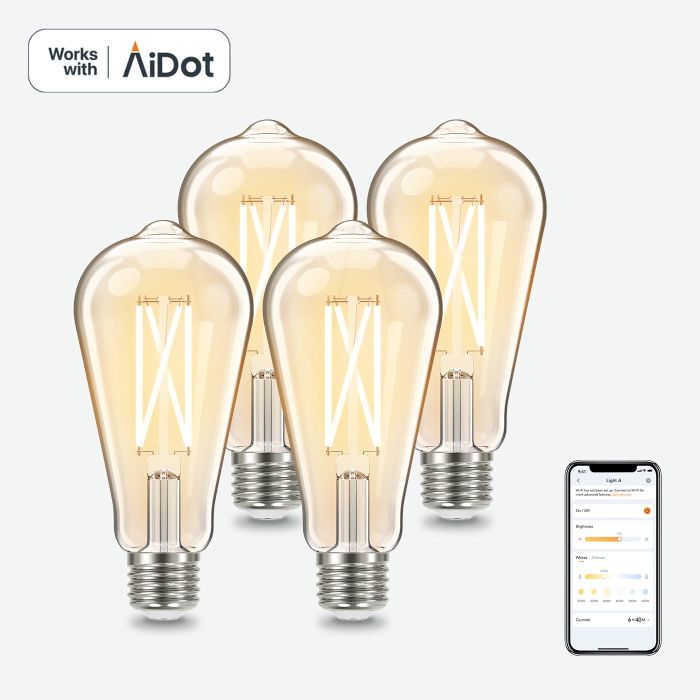
Smart Lighting Considerations
Integration with Smart Home Systems
To maximize the benefits of smart lighting, ensure your chosen smart bulbs are fully compatible with your existing smart home system. This ensures seamless integration, allowing you to take full advantage of advanced automation and control features. Whether you use Amazon Alexa, Google Assistant, or Apple HomeKit, selecting bulbs that sync effortlessly with these platforms guarantees smooth operation and enhances your home’s smart connectivity.
Features and Controls
When selecting smart light bulbs, prioritize options that offer energy-saving modes, dimmability, and customizable settings. Energy-efficient bulbs reduce electricity consumption, leading to lower utility bills and a smaller carbon footprint. Dimmable options provide flexibility, allowing you to adjust brightness levels to match different moods and activities. Customizable settings, such as scheduling and color adjustments, further enhance convenience and create personalized lighting experiences tailored to your lifestyle.
Practical Tips for Transitioning to Smart Lighting
1. Assess Your Current Lighting Needs: Evaluate the lighting requirements of each room to determine the best type of smart bulb for each space. Consider the activities performed in each area and choose daylight bulbs for task-oriented spaces and soft white bulbs for relaxation zones.
2. Plan the Transition Strategically: Transitioning to smart lighting doesn’t have to be overwhelming. Start by replacing bulbs in key areas like the kitchen and living room, then gradually upgrade other rooms. This approach allows you to manage costs and adjust to the new technology seamlessly.
3. Combine Daylight and Soft White Bulbs: For a versatile lighting solution, consider combining daylight and soft white bulbs. Daylight bulbs can be used in workspaces and kitchens to enhance clarity and focus, while soft white bulbs can be placed in bedrooms and living rooms to create a warm, cozy atmosphere. This combination offers tailored lighting solutions that cater to different activities and times of day, optimizing your home environment.
Conclusion
Choosing the right lighting for your home involves balancing functionality and ambiance. Daylight bulbs, with their bright, crisp light, are ideal for kitchens and home offices, enhancing visibility and productivity. Soft white bulbs, emitting a warm, inviting glow, are perfect for bedrooms and living rooms, creating a cozy atmosphere.
When selecting smart light bulbs, consider compatibility with your smart home system to leverage features like automation and energy-saving modes. Dimmability and customizable settings can further enhance convenience and energy efficiency.
Start by assessing your lighting needs for each room and plan your transition strategically. Combine daylight and soft white bulbs to optimize your home environment, ensuring both clarity and relaxation. This approach will help you create a comfortable, functional, and energy-efficient home with the perfect lighting for every space.
FAQs about Daylight bulbs and Soft White bulbs
Q1: What are the benefits of using daylight bulbs?
Daylight bulbs promote alertness, enhance visibility, and are ideal for task-oriented areas like kitchens and home offices.
Q2: How do soft white bulbs impact mood and ambiance?
Soft white bulbs create a warm, cozy atmosphere conducive to relaxation and are perfect for bedrooms and living rooms.
Q3: Can I mix daylight and soft white bulbs in the same room?
Yes, mixing both types can provide layered lighting and cater to different activities within the same space.
Q4: What should I consider when buying smart light bulbs?
Consider compatibility with existing smart home systems, features like dimmability and energy efficiency, and the intended use of each bulb.
Q5: How do I integrate new bulbs with my smart home system?
Ensure compatibility by checking specifications and follow setup instructions provided by the bulb manufacturer or smart home system provider.












